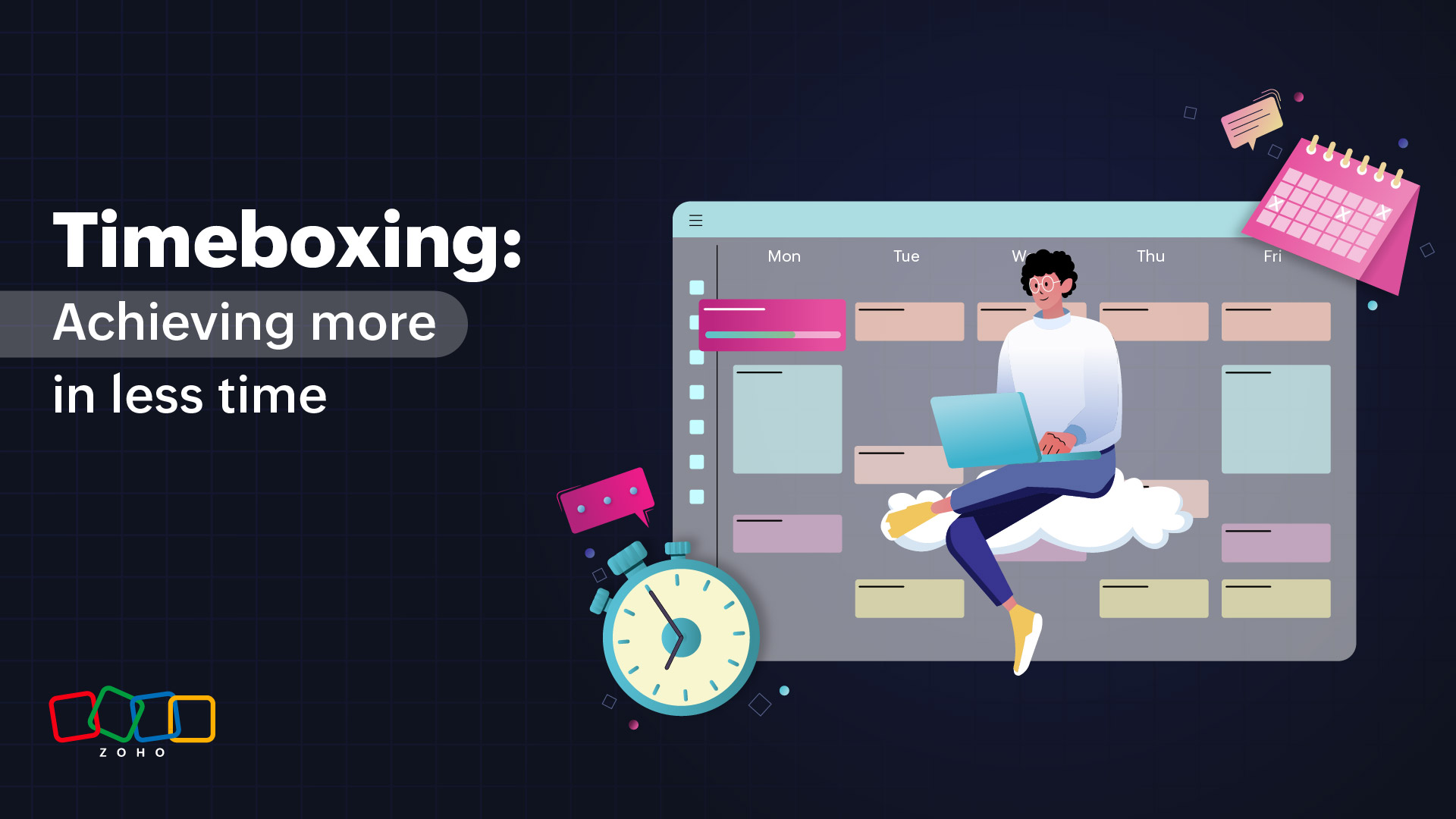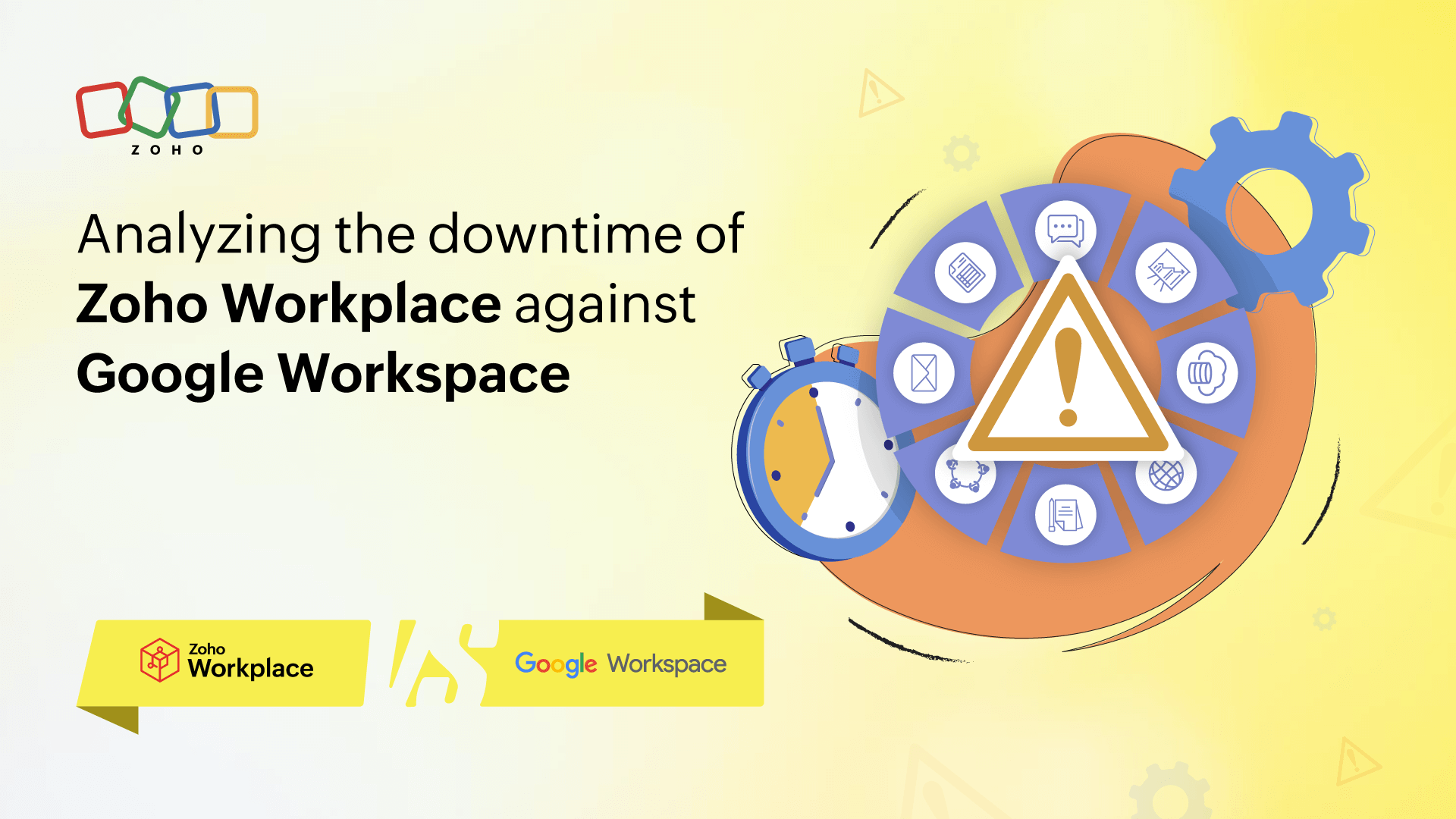- HOME
- All Products
- Calendar
- Timeboxing: Achieving more in less time
Timeboxing: Achieving more in less time
- Published : October 18, 2024
- Last Updated : October 18, 2024
- 397 Views
- 9 Min Read
With all of the distractions, obstacles, and challenges we face every day, managing time effectively can be the difference between success and burnout. Timeboxing helps solve this not only by organizing daily routines but also by setting clear boundaries, improving focus, and maintaining a healthy balance between your work and personal lives.
In this article, we’ll take a deep dive into what timeboxing is, but we'll also discuss some things to consider and common challenges. By the end, you'll have a practical toolkit to enhance both personal productivity and team efficiency. Simply put, you can’t afford not to have timeboxing in your arsenal.

What is timeboxing?
Timeboxing is a productivity and time management technique where a specific, fixed amount of time is set aside for a particular task or set of tasks. Rather than working on a task until it's completed, the focus shifts to completing as much as possible within a predefined time frame.
This structured approach forces individuals to work with focused intensity and urgency, eliminating the possibility of spending excessive time on a single task or getting sidetracked by distractions.
The concept of timeboxing is rooted in Agile software development, where work is often divided into time-limited sprints—short, focused periods in which teams concentrate on delivering specific objectives. However, it has evolved far beyond the tech industry, with applications in daily personal productivity, project management, and even learning and self-development.
The fundamental difference between timeboxing and traditional task management lies in its emphasis on time over tasks. With conventional to-do lists, the objective is task completion, no matter how long it takes.
In contrast, timeboxing flips this model by concentrating on how much can be accomplished within a set time. This shift in approach encourages a higher degree of focus, as the boundaries imposed by the timebox create a sense of urgency and reduce procrastination.
Timeboxing offers flexibility—tasks can span multiple timeboxes or be revisited later if needed. This method also provides valuable insight into personal work habits, revealing how long certain activities actually take, helping with future planning and better task allocation.
Types of timeboxing
Timeboxing can be adapted to suit various needs, ranging from individual task management to collaborative team workflows. While the core principle remains the same—allocating a fixed amount of time to work on a task—the application varies depending on the context. Below we'll talk about the most common types of timeboxing.
1. Personal timeboxing
This type of timeboxing is designed for individual use, where you set aside specific time blocks for your own tasks. Whether you’re managing personal projects, tackling a workday, or organizing your morning routine, personal timeboxing brings structure to your day. A common approach is to plan the day or week ahead, assigning tasks to designated time slots, ensuring that no task monopolizes your time or attention.
For example, you might set a timebox of 30 minutes to check and respond to emails, then move on to a 90-minute timebox for focused work. This keeps your day on track and ensures that smaller tasks don’t creep into your more productive time.
2. Team timeboxing
Within teams, timeboxing is often applied to improve collaboration and project management. The most notable example comes from Agile frameworks, where work is divided into short sprints or iterations. Each sprint has a fixed time period, usually one to four weeks, during which the team focuses on completing specific tasks or milestones. This method encourages efficiency, as the team must prioritize the most important work within the limited sprint time.
Beyond Agile, teams can use timeboxing in daily meetings, brainstorming sessions, and project discussions. For instance, setting a 15-minute timebox for a team check-in ensures that meetings stay productive and don’t become time thieves. Timeboxing here not only organizes work but also helps manage team communication and collaboration more effectively.
3. Daily timeboxing
Daily timeboxing involves breaking down your entire workday into manageable chunks. Instead of focusing on a single task for hours on end, you distribute your time across various activities. This method is particularly useful for juggling multiple responsibilities or projects in a single day.
For example, you might reserve your mornings for deep work in 90-minute timeboxes and your afternoons for meetings, admin tasks, or creative brainstorming. By structuring your day in this way, you create a balanced workflow that tackles both essential and ancillary tasks.
4. Weekly or project-based timeboxing
This type is more strategic and applies to larger projects that span weeks or even months. In contrast to day-to-day planning, weekly or project-based timeboxing establishes deadlines by carving out specific time frames for project milestones.
This approach is particularly useful when managing long-term initiatives that require ongoing attention, like launching a product, developing a marketing campaign, or learning a new skill.
By scheduling timeboxes over a longer period, it becomes easier to track progress and avoid last-minute rushes to meet deadlines. Teams can also assess their progress more accurately, adjusting timeboxes as needed based on actual performance or unforeseen changes.
5. Deep work timeboxing
For tasks that require deep concentration and uninterrupted focus, deep work timeboxing is the answer. This method involves setting long, uninterrupted blocks of time—usually 90 minutes to two hours—for complex tasks that demand complete focus, such as writing, coding, or designing. During this timebox, distractions are minimized, notifications are turned off, and you work in a state of flow.
Deep work timeboxing is especially valuable for creative professionals or knowledge workers who need to produce high-quality work without interruptions. This method encourages cognitive focus, allowing you to achieve more in a concentrated period of time than you would in a distracted workday.
The benefits of timeboxing
Timeboxing introduces structure and discipline to your day without overwhelming rigidity. It offers a way to manage not just tasks, but also energy and focus. The idea isn’t to be busy but to be purposeful in how you spend your time. Here’s why adopting timeboxing can create a lasting impact on both productivity and well-being.
It boosts productivity
There’s something about a ticking clock that makes us work differently. When we know there’s a set endpoint, it compels us to dive in with more urgency. Timeboxing gives you that extra push. You no longer spend hours fine-tuning trivial details; instead, you direct your energy into making the most of the time you have. This drives progress instead of perfection.
Tasks that might otherwise stretch out indefinitely suddenly feel more manageable. You carve out an hour and focus solely on the job at hand, knowing that when the timebox is over, you’ll move on. The result? A natural momentum builds, and what seemed daunting feels achievable.
It cuts down on procrastination
The battle with procrastination often stems from not knowing where to start or feeling overwhelmed by the scope of work. Timeboxing neutralizes this by giving tasks a beginning and an end. It reframes your day into digestible segments of time, helping you overcome the inertia that usually accompanies large tasks.
Instead of thinking, “I have to finish this entire project,” your mindset shifts to, “I’ll make progress on this for the next hour.” This subtle change reduces the mental block that can keep you stuck in procrastination mode.
It helps with maintaining work-life boundaries
Where work can easily bleed into personal time, timeboxing introduces balance. By clearly defining when tasks will begin and end, you create distinct lines between work and your personal life. This method gives you permission to fully step away once your work is complete, knowing you did what needed to be done within your allotted time.
But it’s not just about organizing your work day—it’s about prioritizing rest and personal activities just as effectively. By scheduling breaks or a hard stop at the end of the day, you ensure your personal life doesn’t get overshadowed by work obligations.
It aligns team efforts
For teams, timeboxing has another layer of value: It synchronizes efforts. When everyone is working within the same constraints, there’s a shared understanding of what’s achievable. Meetings become streamlined, brainstorming sessions stay on point, and collaboration thrives because everyone is working toward the same objectives within a defined time frame.
In collaborative environments, timeboxing is also a way to maintain accountability without micromanagement. Each team member knows how much time is allotted for their part of the process, and this common structure helps keep everyone aligned and productive.
Real-life examples of timeboxing
Timeboxing isn’t just a theoretical concept—it’s used daily by professionals and teams across different industries to streamline workflows, enhance focus, and achieve goals. These examples illustrate how timeboxing can be adapted to fit both personal and team settings, helping individuals and groups become more productive.
A productive morning routine
Imagine you start your day by tackling a list of tasks without any clear time limits. Emails stretch into hours, meetings overlap, and before you know it, your day has slipped away. By incorporating timeboxing, mornings can be transformed into high-efficiency work sessions.
In particular, an email timebox sets a boundary, preventing a mundane task from bleeding into more valuable working hours, while the strategy session is protected from interruptions, ensuring consistent, uninterrupted progress.
Likewise, a meeting timebox can allow for compartmentalizing those annoying Zoom calls so you can focus on listening while using an AI note-taker.
A marketing team's sprint
Timeboxing is central to many collaborative efforts, especially in project management. One powerful example is a marketing team preparing for a product launch. Instead of working endlessly until everything is perfect, the team organizes their tasks into short, timed sprints, with each sprint focused on specific deliverables.
You can even use this approach for different parts of a customer journey or a lead-generating funnel. This way of thinking can further be bolstered by proper team communication, which adds up to a reduction in burnout and effective cognitive effort.
Learning new skills
Timeboxing can be highly effective when applied to personal development and skill-building. Instead of committing vague amounts of time to learning something new, like coding or a foreign language, you create dedicated timeboxes for study or practice.
Common challenges in timeboxing
While timeboxing can significantly enhance productivity, it’s not without its challenges. Implementing it effectively requires discipline and adaptation, and there are several hurdles you may encounter when starting out. Here are some of the most common challenges and how to overcome them.
Underestimating time requirements
One of the most frequent challenges in timeboxing is underestimating how long certain tasks will take. It's easy to set overly optimistic timeboxes, only to find yourself rushing to finish or unable to complete the task at all. This misjudgment can lead to frustration and a sense of failure, defeating the purpose of timeboxing.
Overloading your day
A well-planned day can quickly fall apart if too many timeboxes are crammed into it. Timeboxing often gives people the false impression that they can squeeze in more tasks than is realistically possible. This leads to an overloaded schedule and a growing list of incomplete tasks, which can feel overwhelming.
Distractions and interruptions
Even with the best of intentions, distractions and interruptions can derail timeboxed sessions. Whether it’s an unexpected phone call, an urgent email, or the temptation to check social media, distractions make it difficult to maintain focus within your timebox.
Sticking to time limits
Another challenge is knowing when to stop. The temptation to keep working beyond the timebox—especially when you’re "in the zone"—is strong. However, extending timeboxes undermines the method’s core principle of balancing tasks with time. It’s crucial to develop the discipline to stop when the timer goes off, even if the task isn’t fully completed.
Essential timeboxing tips
To beat these challenges and get the most benefit, you need to smooth out the edges a bit. That’s why you should try these tips on for size:
Start with shorter timeboxes: Begin with manageable time slots, gradually increasing as you adapt.
Prioritize high-impact tasks: Focus your timeboxes on tasks that drive the most value.
Use a timer or digital tools: Tools like Zoho Tasks and Zoho Calendar help keep you on track.
Respect your timeboxes: Stop when the time is up, even if the task isn’t complete—schedule a new timebox if needed.
Build in buffer time: Leave gaps between timeboxes for breaks or unexpected tasks.
Review and adjust regularly: Analyze your productivity and tweak timeboxes based on real results.
Conclusion
Timeboxing isn’t just another productivity hack—it’s a mindset shift. By focusing on managing time rather than simply completing tasks, you'll gain control over your day, reduce distractions, and maintain momentum without burning out.
Whether you’re working solo or as part of a team, timeboxing offers the structure needed to stay focused, make consistent progress, and adapt to changing priorities. It’s not about perfection, but about making the best use of the time you have.
 Gary Stevens
Gary StevensGary Stevens is the CTO of Hosting Canada, a website that provides expert reviews on hosting services and helps readers build online businesses and blogs. Gary specializes in topics on cloud technology, thought leadership, and collaboration at work.










